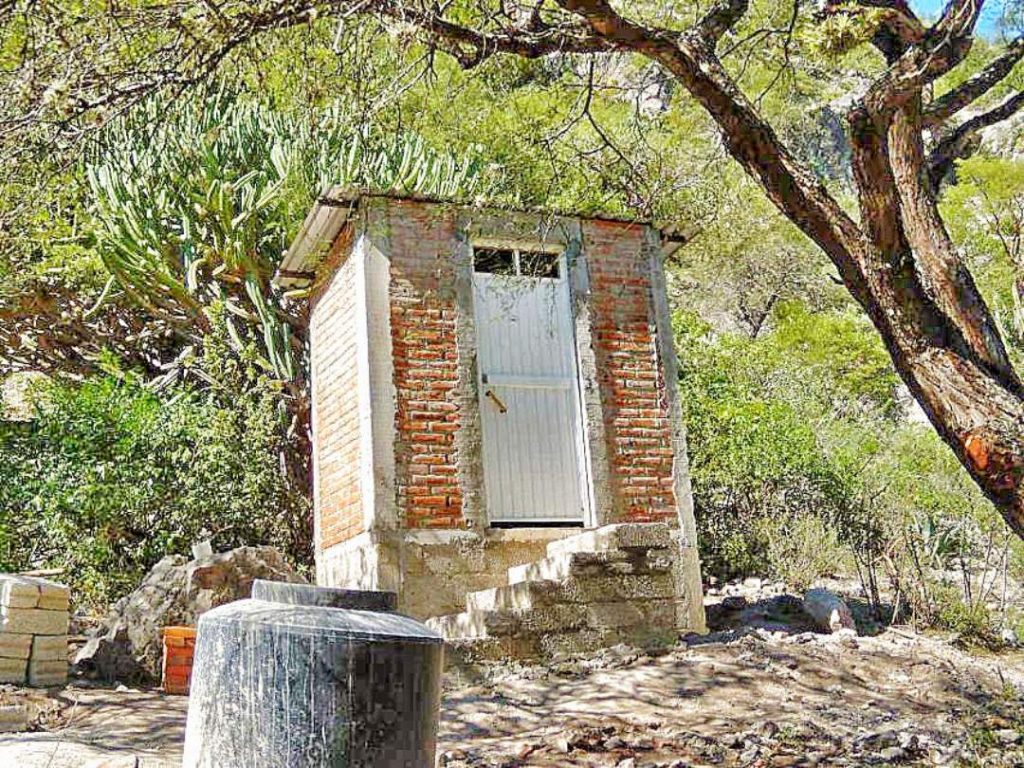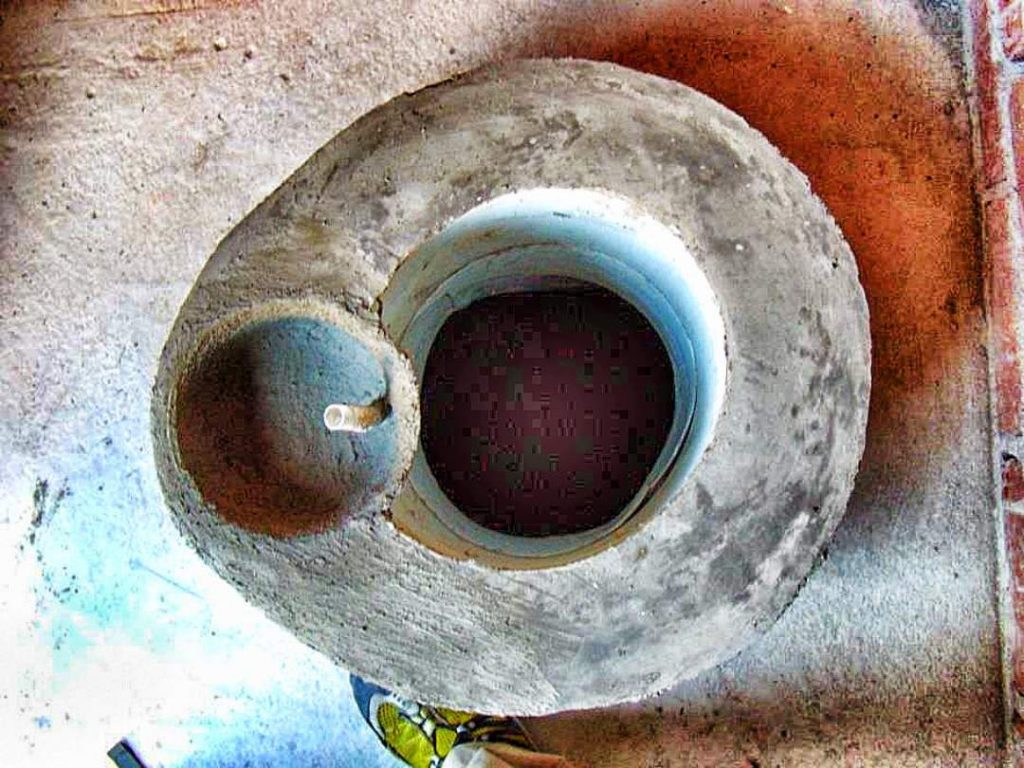This project has been completed under the direction of Peace Corps Volunteer Christopher Clipper.
To read about the beginning of the project, CLICK HERE.
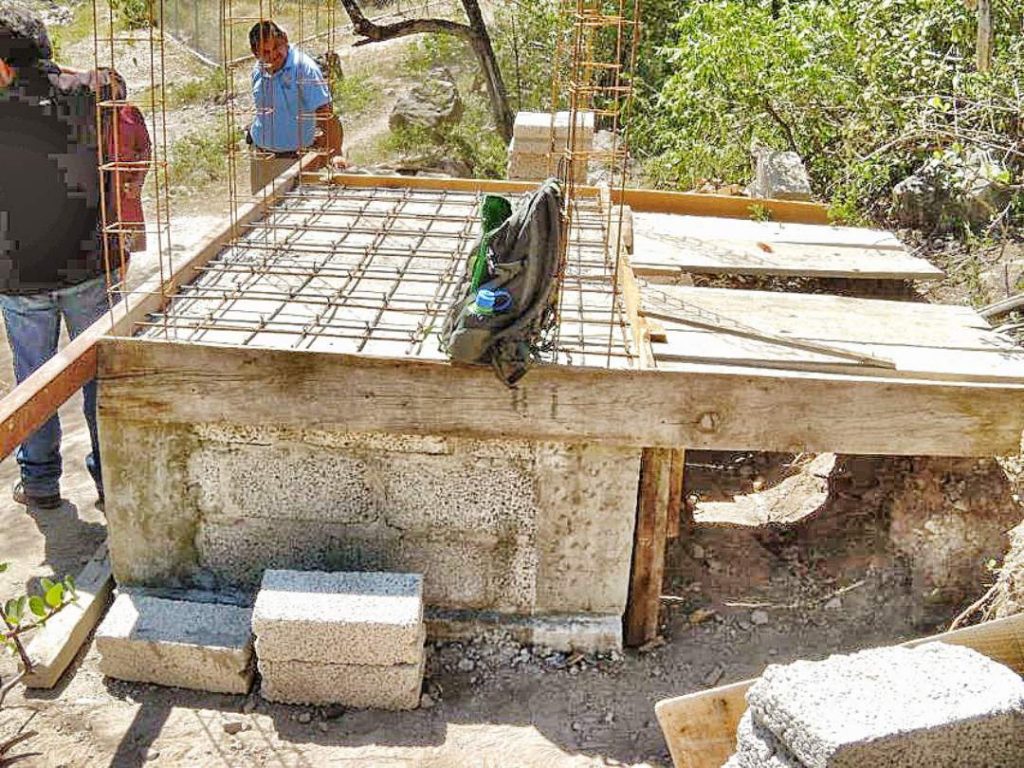 Christopher’s report on the project
Christopher’s report on the project
Goal:
Build the material capacity of the community by completing a fully functional environmental interpretation center that incorporates environmental protection.
WC Objectives:
1. Build a dry bathroom for the environmental interpretation center.
2. Train construction workers how to build a dry bathroom.
3. Train the community committee about the technology and how to maintain a dry bathroom.
Specific work that was done:
I purchased the materials for the project on October 7-8, 2015 and delivered to the community on October 9, 2015. Construction started on October 9, 2015. First, the ground was prepared and leveled for the base of the bathroom. The base was then constructed using poured concrete and wood forms. The chambers for solids (excrement) were built on top of the base, using concrete blocks. The floor was then completed for the bathroom using poured concrete and allowing for spaces within the floor for the toilets. The walls were then built using brick. The roof was then assembled using sheet metal. The door was installed. The stairs were then built. The doors for the chambers for the solids were made using poured concrete and wood forms. The toilets were constructed last, using a bucket as a template, with a combination of brick and concrete built around the bucket to form the toilet.
Construction finished November 7, 2015. The construction workers were trained throughout the project on construction techniques by myself and my counterpart. I met with the construction workers on October 6, 2015 before construction began to finalize construction details and answer questions. I also confirmed details and answered questions during site visits during the construction phase. Training was completed through using a construction brochure (for illustrations and instructions in writing) and also through verbal communication.
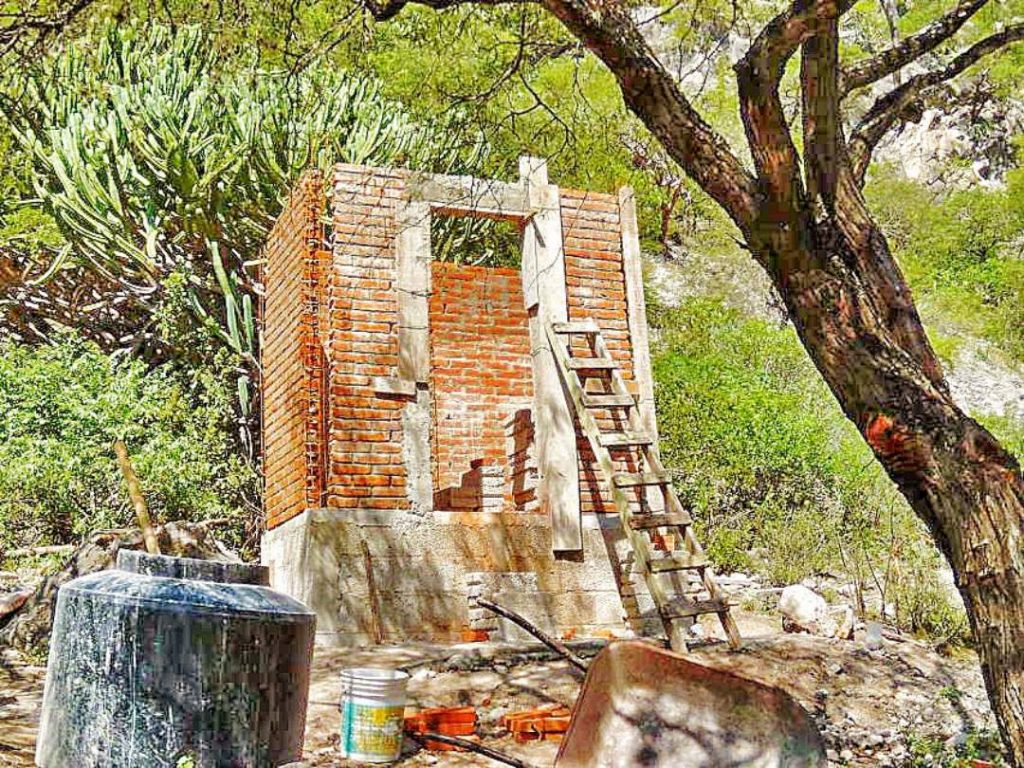 The community committee was trained on the technology and how to maintain the bathroom on November 11, 2015. During the training I asked one of the construction workers to describe the construction process. I asked my counterpart in the community to describe how the bathroom is maintained. The counterpart described in general how to maintain the bathroom and also used information from a maintenance brochure to provide more specific details. I concluded the training by answering questions. The group then toured the bathroom.
The community committee was trained on the technology and how to maintain the bathroom on November 11, 2015. During the training I asked one of the construction workers to describe the construction process. I asked my counterpart in the community to describe how the bathroom is maintained. The counterpart described in general how to maintain the bathroom and also used information from a maintenance brochure to provide more specific details. I concluded the training by answering questions. The group then toured the bathroom.
How the work progressed through each stage:
The construction took longer than expected. There was a death in the community. Day of the Dead (a holiday) took place during the construction period. The workers had no prior experience building a dry bathroom, which delayed construction slightly. Also, toward the end of the project, there was a shortage of materials. I visited the site often to keep the project moving.
The training of construction workers was more complicated than expected. As already mentioned, the workers had no prior experience constructing a dry bathroom; they were not aware of the concept of a dry bathroom prior to the project. I found myself explaining the same design concepts many times. I provided a brochure for the workers to refer to (which outlined the construction step-by-step) and we made decisions during construction to customize the project. The workers also made minor modifications to the design (e.g. using concrete block instead of poured concrete to construct the chambers) which turned out really well. As the construction phase progressed, the concept of the bathroom (and methodology for construction) became much clearer for the construction workers.
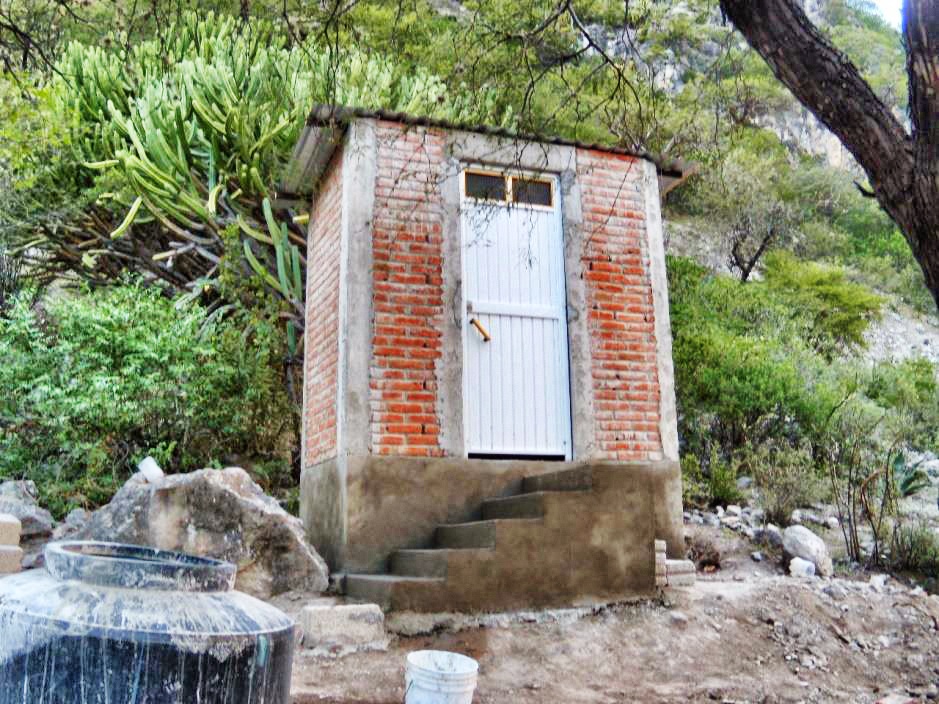 The training of the community committee went very well. Scheduling the training was very easy – the training was combined with a pre-scheduled meeting. My strategy for the training was to have community members provide the information about the bathroom, instead of me. This strategy worked well. The committee members asked questions during the training. Following the training, members of the committee toured the bathroom to reinforce their knowledge.
The training of the community committee went very well. Scheduling the training was very easy – the training was combined with a pre-scheduled meeting. My strategy for the training was to have community members provide the information about the bathroom, instead of me. This strategy worked well. The committee members asked questions during the training. Following the training, members of the committee toured the bathroom to reinforce their knowledge.
End result:
The goal was achieved. With the completed dry bathroom, the environmental interpretation center is now functional. The dry bathroom incorporates environmental protection.
There were no changes to the objectives. The dry bathroom was built. Two construction workers from the community were trained how to build a dry bathroom. Twenty of the 32 committee members were trained on the technology and how to maintain the dry bathroom.
Comments from the community:
The community has already approached me about building a second bathroom. Due to time constraints and other commitments, I will not be able to assist. I have provided the community with the necessary information to build more bathrooms.
